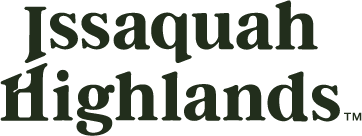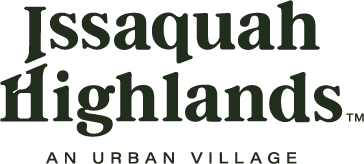Click here to download the complete document PDF (updated 01/2020)
Issaquah Highlands is a visionary urban village created for the enjoyment and benefit of the entire community. Part of community living involves following the maintenance standards and the guidelines below, which ensure that neighborhoods remain clean, well-maintained, and aesthetically pleasing to residents, while enhancing property values. Reference the ARC “neighborhood types” for specific inclusions and exclusions to these Standards. The maintenance standards and guidelines below must be followed on all portions of residential lots, including front yards, side yards, alleys and inside fences.
Turf Standards
- Turf must be mowed evenly and be kept at or less than a height of 4” inches.
- Turf must be edged when adjacent to any hard surface or landscape bed.
- Turf should be free of bare patches. Turf may be allowed to go dormant in summer but if patches of grass die, they must be repaired with either sod or seed.
- Turf may be replaced with alternative landscaping on approval by ARC.
- Turf must be free of weeds and moss.
- Grass clippings may remain after a mow to encourage green lawn maintenance practices.
Bed Standards
- Weeds in any landscape bed must be minimal and kept under control.
- Refer to the ARC “Neighborhood types” for the intended “feel” of the neighborhood and plantings.
- Mulch or bark must be maintained at a minimum of 1” depth to control weeds and conserve water. Two to three (2-3) inches is recommended.
Plant Standards
- Plant materials shall be a combination of ornamental, native and drought-tolerant varieties adapted to the climatic conditions of the Issaquah Highlands and on the Architectural Review Recommended Plant List and installed as per the Issaquah Highlands Plant Size and Spacing Requirements.
- All plant material shall be maintained in an orderly state, trimmed and neat in appearance. Selective pruning techniques must be utilized. Topping of trees is prohibited.
- Vegetation shall not encroach on sidewalks, trails, driveways, or any pedestrian right-of-way. The IHCA may prune encroaching plant material without consent. Trees overhanging sidewalks shall be kept trimmed at least 8 feet above the walkways to facilitate pedestrian use.
- Dead plants should be removed immediately and then replaced during appropriate growing season (spring or fall). Dead is classified as more than 50% of the plant is without leaves or exhibits dead foliage.
- Low hedges used as screens shall have a maximum height of 42 inches. Plant material used for “living fences” made up of trees or shrubs on the sides or back of yard must not exceed eight (8) feet in height. Designated view covenants must be strictly adhered to.
- Evergreen plant materials shall be used to screen exposed house foundations.
- Trees and large shrubs should be located to avoid blocking views from interior rooms or adjacent properties.
- Per Exhibit D of the IHCA Use Rules and Restrictions, “No resident may add, alter or remove any trees in the common areas, wetlands, parks, sensitive areas or on private land without advance written approval of the ARC and/or the appropriate governmental agency.”
- Common area or street trees shall not be topped or limbed or otherwise disturbed.
Yard Standards
- Yard waste (leaves, twigs and branches) and other debris or rubbish should be removed and appropriately disposed of and not stored within the yard. Yard waste must not be deposited on IHCA property or IHCA maintained streetscapes.
- No excessive use of yard items such as pots or yard art.
- Maintenance of yards does not include IHCA landscape (between the street and the sidewalk).
- Pet Waste must be removed immediately from yards and properly disposed of.
- Clean-up of a severe wind or weather event which causes excessive storm debris shall occur within 7 days of the event.
Vacant Lot Standards
(Sold lots not yet under construction.)
- Lots must be kept clean of debris.
- Lots must be kept mowed as needed during spring and summer months to maintain a vegetation height no greater than 8 inches.
- All Alder saplings and any other invasive species must be removed from lots.
- Dead plant material shall be removed immediately.
- Nothing is to be stored on lots without IHCA permission.
- Homeowners must maintain proper grading and drainage on their individual lots.
Paint Standards
- Trim (fascia boards, railings, and doors) and Body (siding): Paint of both trim and body must be maintained on a regular basis to avoid degradation in the form of peeling, cracked, missing, see-thru or sun-faded paint. Re-painting must take place when 15% of the total area demonstrates degradation.
Roofing Standards
- Roof materials must be maintained on a regular basis to avoid degradation due to missing shingles, gutter damage, repair from damage caused by natural elements and moss build-up.
- Moss must be removed and/or treated when it is visible on any roof surface.
- Moss control materials, agents or treated roofing materials shall only be used in accordance with the best management practices, as defined in the Water Wise Living Document.
- Gutters should be free of weeds and other vegetation. Gutter exteriors should be cleaned of dirt, moss and debris.
Fencing Standards
- All fencing material must be maintained on a regular basis to avoid degradation due to rotting posts, ground settlement (leaning of panels or posts), and damage caused by natural elements.
- Gates must latch.
- Painting standards apply to fencing material whether stained or painted
Other Standards
- Broken windows: Windows, window seals, and screens must be replaced when broken or damaged. Any broken glass should be properly disposed of immediately.
- Motor oil or antifreeze: Any leakage on the ground surface is not permitted. If it occurs it shall be removed immediately from the ground surface utilizing environmentally safe clean-up kits.
- Pesticides/Herbicides: The use of pesticides, herbicides and weed & feed fertilizers are highly discouraged due to the Issaquah Highlands proximity to the City of Issaquah’s aquifer and surrounding waterways. The use of sustainable landscape maintenance practicesis highly encouraged. Best practices include routine maintenance, timely irrigation and regular organic fertilization.
- Walkways and Driveways: All paths, stairs, walkways, porches, patios and driveways must be free of weeds and moss.
Open Spaces, Parks and Streetscapes
- Open Spaces comprise a spectrum of purposes, uses, plantings and maintenance. Official designations of these areas include road right-of-ways, active and passive open space and greenbelt separation areas. The IHCA, City of Issaquah or King County are various owners of open spaces. All open spaces are governed by the IHCA Integrated Pest Management (IPM) plan.
- Streetscapes are road right-of-ways and are considered high-visibility and receive correspondingly high levels of effort. Turf streetscapes are mowed 35 times annually and edged about 17 times while groundcover streetscapes are edged as needed. Herbicide applications are performed in accordance
with IPM plan. Street trees are pruned and maintained on a regular basis. Replacements are installed in the fall or winter. - Parks and Improved Open Spaces are maintained to the extent of their original installation. Turf is mowed 35 times annually and edged about 17 times, including bed edges. Herbicide applications are performed in accordance with IPM plan. Hedge and shrub pruning frequency is up to twice per year. Trees are trained, pruned and maintained as needed though less frequently than street trees. Parks are mulched at least every second year. Leaf control is done on a regular basis during major leaf-drop with a final pickup made afterwards. Active open spaces total over 130 acres.
- Rough Open Spaces include hillsides, buffer areas and less-accessible, less-visible portions of parks.
These spaces are typically un-irrigated and planted with low- or no-maintenance native plants. Maintenance work may or may not include the use of goat herds or machinery and is geared primarily towards managing invasive species and soil stabilization. No leaf control is provided. - Passive Open Space includes the 1,287 acres of natural area comprising Grand Ridge Park and over 150 acres of city-owned space. Most of these spaces receive no regular maintenance though invasive species management may occur, often in coordination with governing agencies.

